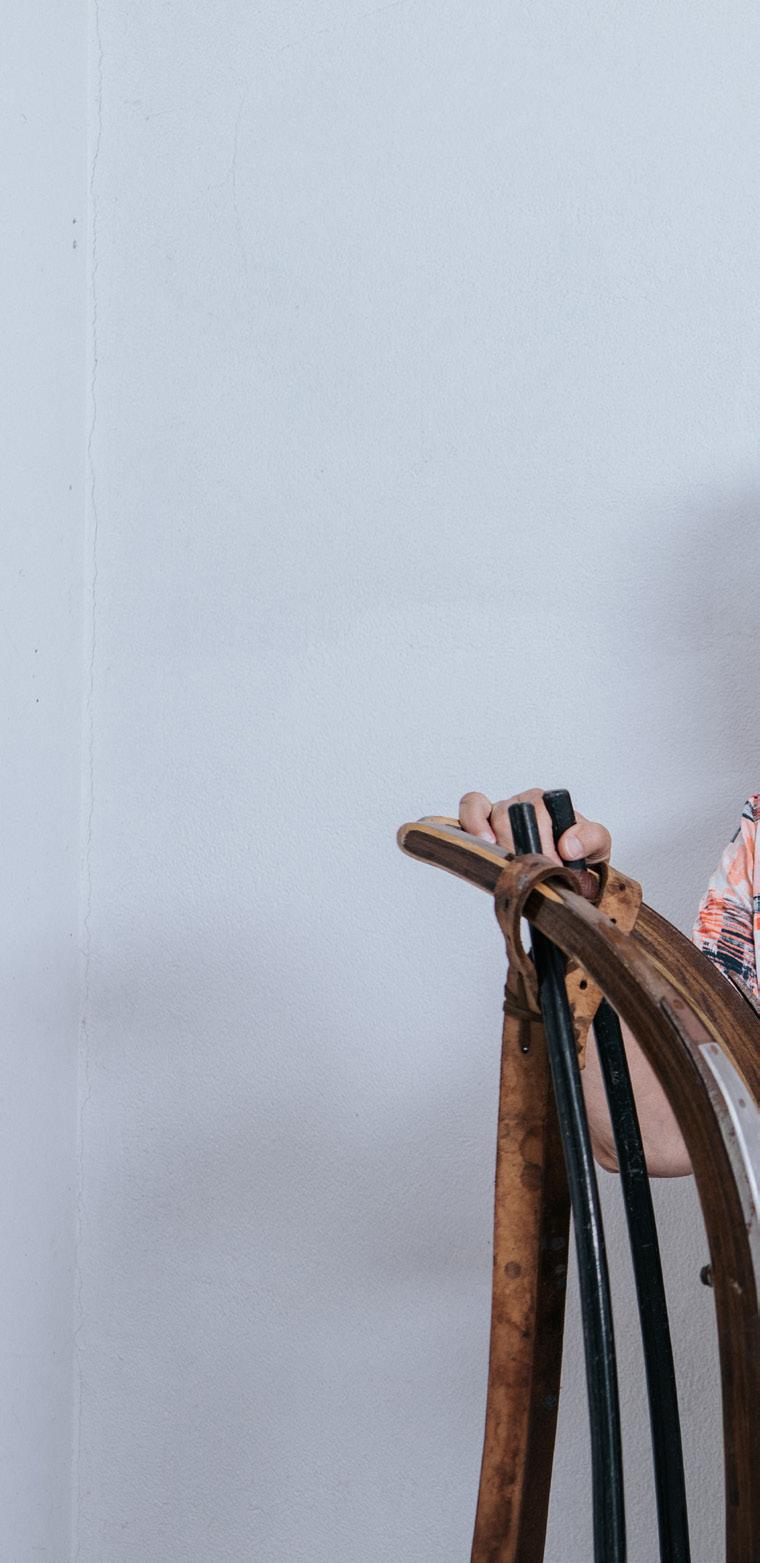
13 minute read
A Tale of Two Lugers An interview with professional lugers Erika Lechner and Dominik Fischnaller
2Interview A Tale of TWO 2019 COR
Two Lugers
Advertisement
They are connected by their passion for luging and their home village of Meransen/Maranza, and separated by almost fifty years of age… as well as an Olympic medal. She has one already, while he has his heart set on winning one. We talked to luge legend Erika Lechner and Italy’s current number one luger, Dominik Fischnaller
Interview — ARIANE LÖBERT Photos — CAROLINE RENZLER

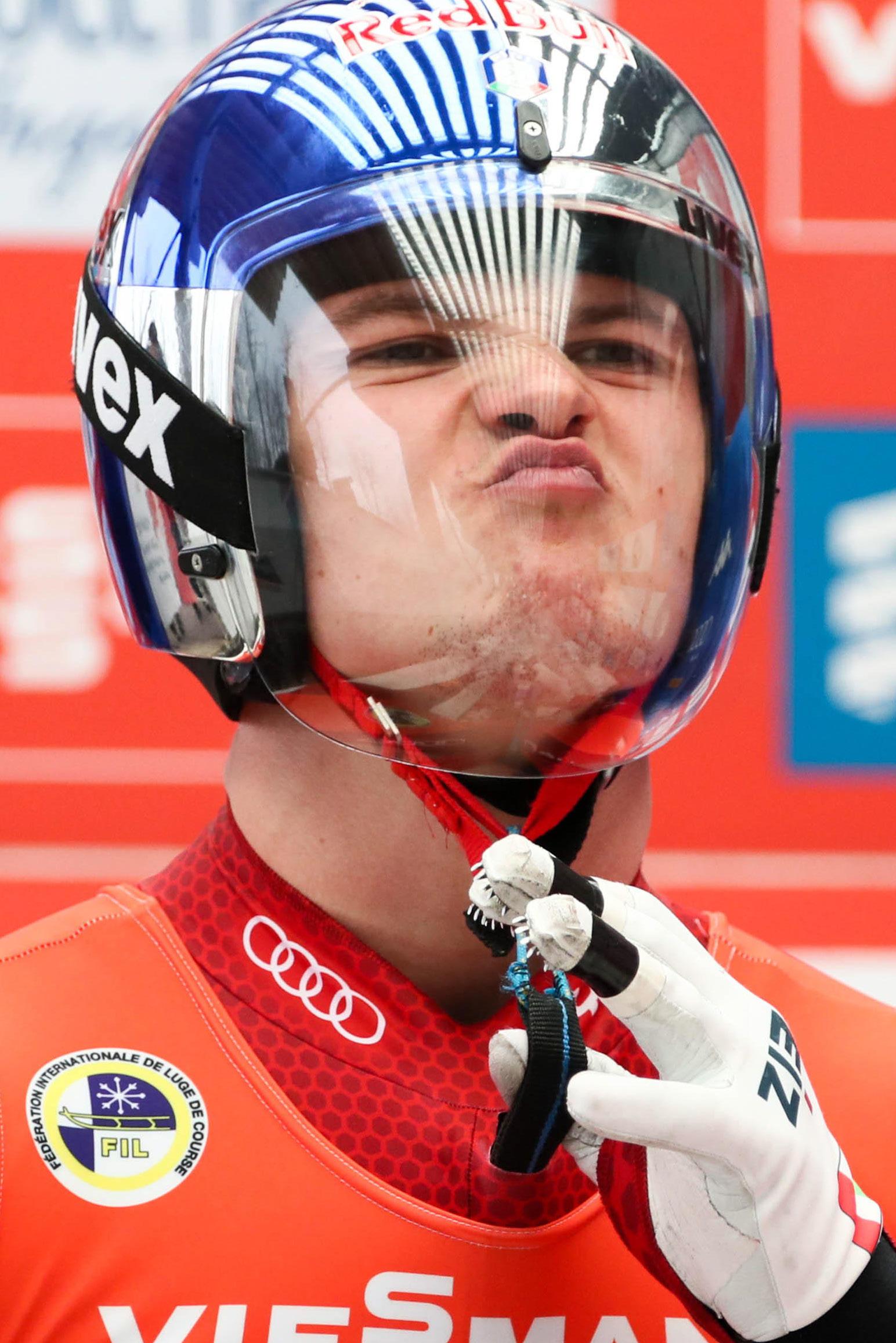
Interview
Dominik Fischnaller
Born in 1993, Dominik Fischnaller made his World Cup debut in 2010. His best place to date in the overall ranking was in the 2013/14 season, when he ranked third. He won gold at the Junior World Championships in Park City in 2013. In 2014, he took home bronze in the singles event at the European Championships in Sigulda and won bronze in 2017 in both the sprint and singles events at the World Championships in Igls. At the 2018 Olympic Games in Pyeongchang, he narrowly missed out on a bronze medal, but went on to win gold in the team event at the 2019 World Championships in Oberhof. Dominik lives in Meransen.
Dominik, is it true that Erika’s brother was the one who introduced you to the sport of luge? DOMINIK FISCHNALLER: Yes! We have a short luge track here in Meransen where athletes can practise their start technique. We spent lots of time there as children and got to know Emil Lechner. At some point, Emil took me, my sister and a friend to the ice channel in Imst in the Austrian state of Tyrol. We all had a lot of fun and that’s how we got into luging.
Were you not afraid the first time you gave it a go? DOMINIK: Of course I was. I think everyone feels scared when they first lay eyes on a track like that. But we didn’t start from the very top. Instead, we just rode down the last three or four bends and then it was only half as frightening, but still really fun.
And were you gripped by luge fever straightaway? DOMINIK: I also played football and took part in ski races back then but luge was my favourite sport. It came to me really naturally from the outset so I carried it on.
How did you get into luging, Erika? ERIKA LECHNER: It was just what we did for fun in winter. Apart from luging and skiing there wasn’t a whole lot else to do when I was young. We would sledge down into the valley – there wasn’t a road back then – and then take the cable car or walk back uphill from Mühlbach/Rio di Pusteria. There are quite a few lugers from Meransen competing in the World Cup at the moment. Do you think you started a village tradition? ERIKA: I think the starting track that Dominik mentioned is more likely the reason why a few young lugers have followed in my footsteps. My brother probably also played a part by whipping up excitement about the sport among lots of youngsters in the village. DOMINIK: Emil still makes the spikes for our gloves. He’s brilliant at it and he’s been doing it for as long as I can remember. ERIKA: My brother is a blacksmith by trade and was also a luger back in the day. But in my time we just wore normal gloves without spikes.
We thought all luging equipment was made by highly specialised international suppliers nowadays... DOMINIK: No, no, far from it. A lot of luge equipment is made by each nation itself.
And where do you train now, Dominik? DOMINIK: I still train here in Meransen on the starting track, which is also covered in ice in summer. We also have a gym and a sports field. In summer, we train five days a week from eight in the morning until around half past four in the afternoon. From October, we train on the large international tracks where the World Cup races are held.

Nowadays, luging is a professional sport. But it was a very different situation when you were competing, wasn’t it Erika? ERIKA: Yes, I trained either in the morning or the evening depending on when I had time. And when the racing season came to an end, I was handed a training plan to work through. It was up to each individual athlete to decide how and where to follow the plan. It can sometimes be difficult to motivate yourself when you’re left to your own devices.
Can any comparisons be drawn between what luging was like back then and how it is today? Is it still the same sport? ERIKA: I doubt that Dominik would make it to the end of the track in my luge and I’m sure I wouldn’t in his. DOMINIK: You’re probably right! ERIKA: He might manage it in mine but I definitely wouldn’t in his. We used to make our sleds ourselves back then. We had a carpenter and my brother made some of the runners himself. We also paid for everything ourselves. These days, the sleds are tailored to the athletes’ bodies. Our tracks were also not as frozen as they are today. The first artificial track of the kind used today was only constructed in Königssee in Germany in 1969 and it has been rebuilt twice since. During the 1968 Olympic Games in Grenoble, we were still completely at the mercy of the weather. At times, we had to compete in the early hours of the morning when the conditions were more reasonable. There were no spectators at all – it was just us and our coaches.
When we look at your Olympic sled from 1968, Erika, it doesn’t look all that different from a sled used for leisure today... ERIKA: Yes, we still steered it using a belt and we were also still able to see the track. DOMINIK: I can also look at the track if I want to – but I’m quicker if I don’t!
Was luging more dangerous back then? DOMINIK: Today, the way the track is built makes it virtually impossible to fly off the course. That wasn’t the case back then. ERIKA: Often there was just a kind of tarpaulin covering the bends. I’ve witnessed several lugers die next to the track and have seen a lot of serious injuries.
The Germans were already very successful lugers back when you were competing and still are today. Why do you think that is? ERIKA: Even in my day, the Germans had way more financial resources than we did. And they had tracks to practise on. The West Germans had Königssee and Winterberg, while the East Germans had even more sites than that. DOMINIK: The same is true today. They have four tracks – Königssee, Winterberg, Oberhof and Altenburg – where they can train whenever they want and test their equipment throughout the year. We don’t have that.
A new track is being built in Cortina for the 2026 Olympics. DOMINIK: Yes, that will definitely give the sport a boost in Italy.
But before that, we have the 2022 Olympics in Beijing where you’re probably hoping for just a pinch of more luck than you had in South Korea, where you missed out on a bronze medal by two milliseconds. DOMINIK: That was really tough but it’s made me even more motivated to succeed. My hunger to win is still there.
Who are your idols, Dominik? Armin Zöggeler, the exceptional South Tyrolean luger? Or do you have others? DOMINIK: Armin Zöggeler, of course, and Georg Hackl from Germany. They both dominated the sport for decades. And who inspired you, Erika? ERIKA: Ortrun Enderlein was my biggest idol. She represented East Germany and was regarded as the perfect female luger of her time.
Erika Lechner
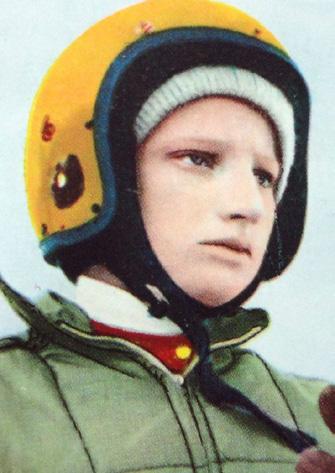

Born in 1947, Erika Lechner became the Italian luge champion for the first time in 1964. She went on to win another six national titles. She took home a gold medal in Grenoble in 1968, becoming the first Italian woman to ever win a medal at the Winter Olympics. In 1971, she won the European Championships in Imst and was only narrowly beaten into second place at the World Championships in Olang. After ending her sporting career in 1972, she became a hotelier. Until a few years ago, she and her siblings ran Hotel Erika in Meransen, where she still lives today.
“I doubt that Dominik would make it to the end of the track on my luge – and I’m sure I wouldn’t in his.” Erika Lechner

10 Tobogganing Rules
How to stay safe on the toboggan run
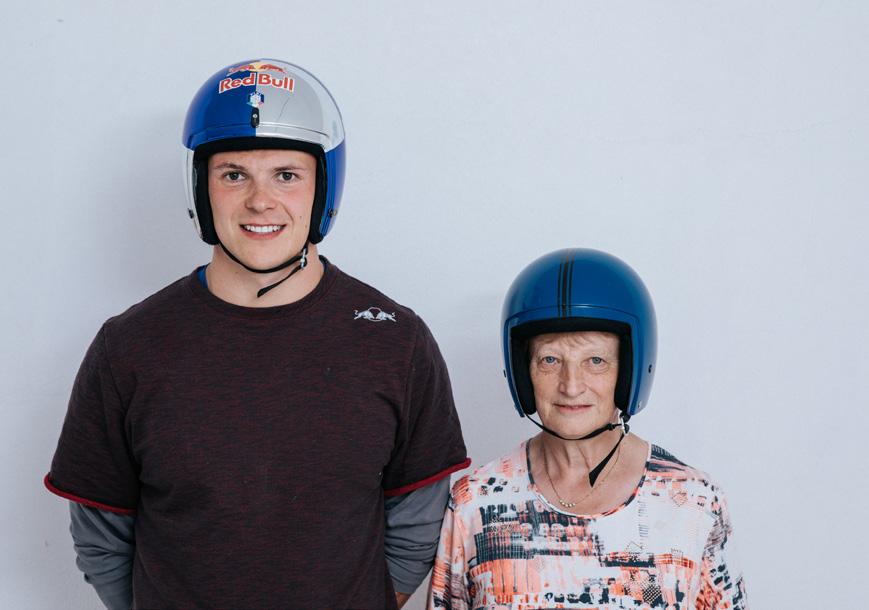
1. Be considerate of other tobogganists and those walking uphill 2. Always control your speed 3. Stay on the tobogganing run and be careful at crossings 4. Overtake others or stop your toboggan only in well-visible spots 5. Never toboggan on ski slopes 6. Observe information signs and markings 7. In the event of an accident, secure the spot from oncoming tobogganers and help those injured 8. Go tobogganing only with suitable equipment, including gloves and sturdy shoes 9. Always wear a helmet when going downhill on your toboggan 10. Never ride a toboggan while under the influence of alcohol
Were you ever allowed to come into contact with the East German athletes? They were closely guarded, weren’t they? ERIKA: As Italians, we could to a certain degree. But the West Germans weren’t able to get anywhere near them. They were seen as class enemies so contact was not permitted at any cost. We once officially invited Ortrun Enderlein to visit us in Meransen through the Brixen/Bressanone Winter Sports Association, but she wasn’t allowed to come. That made me feel very sad at the time because we actually got on very well.
You also have a completely different, much more dramatic story to share with us involving Ortrun Enderlein, don’t you? One where you won Olympic gold in Grenoble in 1968 despite actually only coming third in the competition... ERIKA: It’s a crazy story! I was the fastest in training but during the actual competition I found myself in third place after three runs behind the two East German lugers Ortrun Enderlein and Anna-Maria Müller and in front of fourth-place Angela Knösel, who was also from East Germany. But the three East German competitors ended up being disqualified from the event because their runners had been heated. They had left their sleds in the boiler room until just before we went out to compete. We later experimented with heated runners at home on the track in Olang/Valdaora and discovered that they give you an advantage of up to half a second at the start, which you can’t recoup on the track. Since then, runners have always been checked before the race gets underway. I felt really sorry for the girls. I don’t think they were aware of everything their coaches and advisors were getting up to.
You were given two cars after winning your Olympic gold medal. ERIKA: Yes, I was! Two Fiat 500s. One from the Brixen Sports Association and one from the Italian Winter Sports Federation. Is it true that we have you and these two cars to thank for the fact that a road to Meransen was built? ERIKA: In a way! I should explain: plans were already in place to build a road, albeit a very narrow one. So someone suggested I write a letter to the President of Italy asking if we could maybe have a wider road. So I did! After that, the plans were actually amended and a wider road was built.
You stopped luging a few years after your Olympics victory when you were just 24. Why was that? ERIKA: I wanted to carry on racing but I had built a hotel with my siblings and had to take a whole host of exams in order to run it. It simply wasn’t possible to do all that alongside the sport.
Do either of you ever go tobogganing for fun? ERIKA: Now and again I do. We also have a good natural toboggan run here in Meransen. DOMINIK: I don’t have enough time. But I have had a go on the natural toboggan run.
What is that like? Does your luge experience come in handy? DOMINIK: No, it’s completely different. It would be like comparing Formula 1 racing to driving a normal car. Your experience as a luger doesn’t come into it at all.
Erika, what do you think makes Dominik stand out as a luger? ERIKA: Dominik is very hard-working and has what it takes to be one of the world’s best lugers.
And what do you think of Erika as a luger? DOMINIK: That was before my time, of course, but back then you definitely needed grit, determination and a lot of drive to make it to the top. To achieve that without all the support we have today is fantastic. I take my hat off to her.
But there weren’t any roads in Meransen back then... ERIKA: ...and I didn’t even have a driving licence. I gave one of the cars to my brother and I drove the other one myself when I was finally able to get a driving licence when I turned 21.
TOBOGGANING TIPS
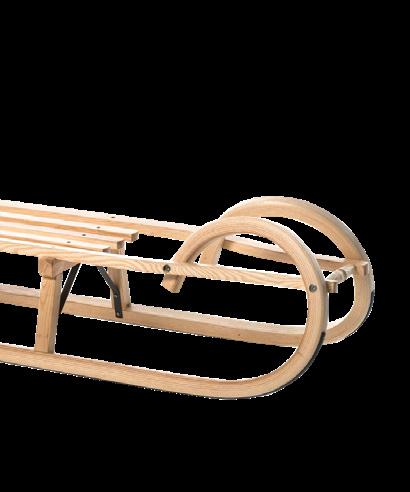
+ Tobogganing is a particularly popular pastime in the Gitschberg Jochtal ski & holiday area and around Brixen/Bressanone and Klausen/Chiusa. In addition to the starting track for professionals, the village of Meransen/Maranza is also home to a natural toboggan run suitable for everyone. The Brimi Winter Run starts at the Nesselbahn cable car mountain station and is a 6.75 km descent, which takes tobogganers down towards the village, stopping just before the valley station. The Kurzkofelhütte Alpine lodge in the neighbouring village of Vals/Valles makes for a ruggedly romantic toboggan ride. The Kreuzwiesenalm Alpine pasture in Lüsen/Luson and the Ackerbodenalm Alpine pasture in St. Leonhard/San Leonardo near Brixen are just as tranquil, but are only accessible on foot. The climb is worth it, as you can reward your efforts with a bite to eat in a rustic setting before enjoying an exhilarating descent back into the valley. If you’re looking for a record-breaking course, head to the RudiRun in the Plose ski resort above Brixen, which is one of the longest toboggan runs in South Tyrol. Starting at the Plose gondola lift mountain station, it is a 9 km run back down to the valley station. Latzfons/Lazfons boasts an extremely well-maintained natural toboggan track called the Lahnwiesen, which plays host to World Cup races and is a popular place to train for natural track athletes from around the globe. Toboggans can be hired from the Gitschberg Jochtal and Plose skiing areas and from some mountain lodges. But be careful! Even tobogganing for pleasure requires a certain level of skill. You should therefore practise steering, braking and stopping on a flat stretch of snow before beginning your descent.










